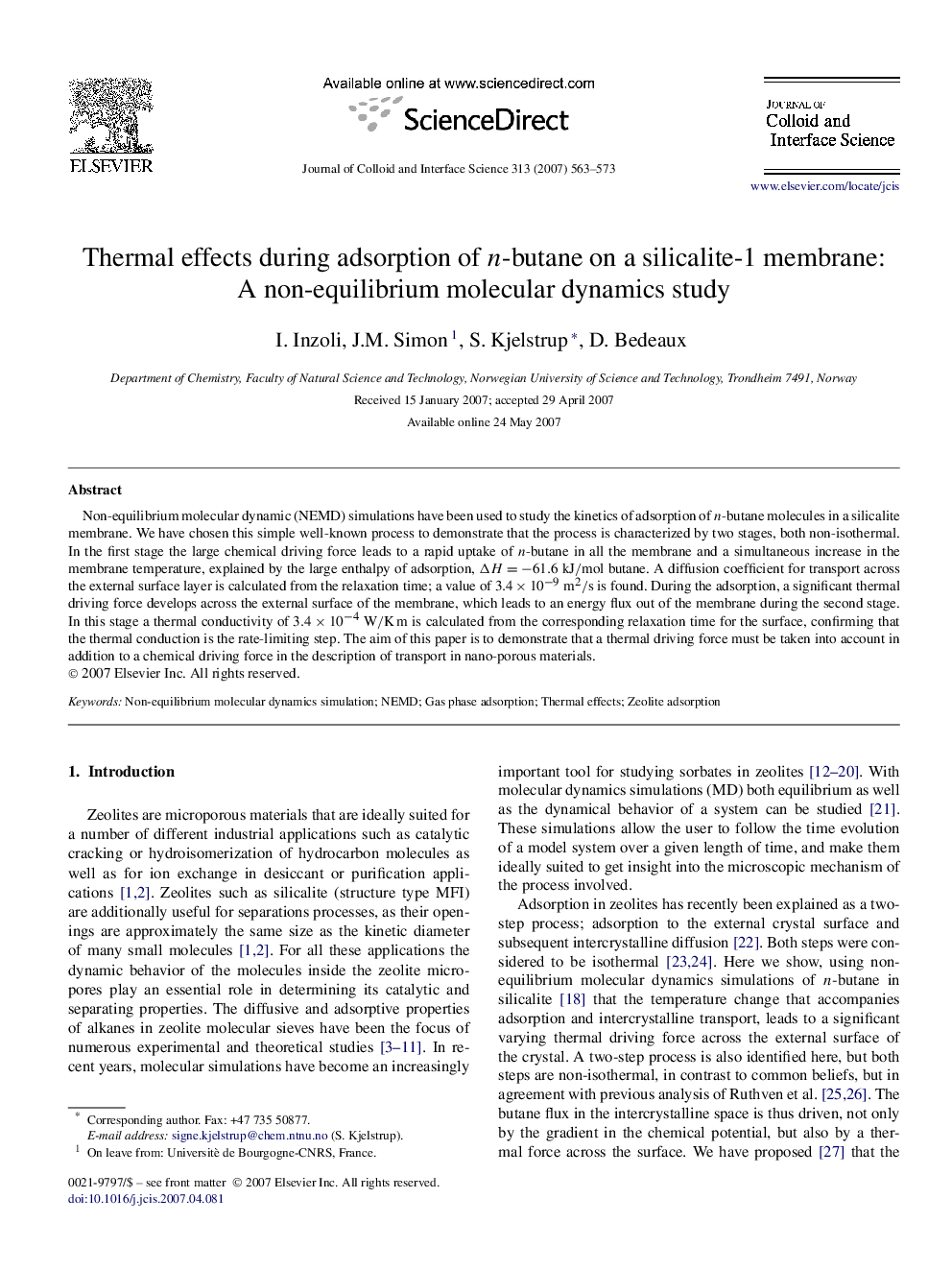| Article ID | Journal | Published Year | Pages | File Type |
|---|---|---|---|---|
| 611793 | Journal of Colloid and Interface Science | 2007 | 11 Pages |
Non-equilibrium molecular dynamic (NEMD) simulations have been used to study the kinetics of adsorption of n-butane molecules in a silicalite membrane. We have chosen this simple well-known process to demonstrate that the process is characterized by two stages, both non-isothermal. In the first stage the large chemical driving force leads to a rapid uptake of n -butane in all the membrane and a simultaneous increase in the membrane temperature, explained by the large enthalpy of adsorption, ΔH=−61.6kJ/mol butane. A diffusion coefficient for transport across the external surface layer is calculated from the relaxation time; a value of 3.4×10−9m2/s is found. During the adsorption, a significant thermal driving force develops across the external surface of the membrane, which leads to an energy flux out of the membrane during the second stage. In this stage a thermal conductivity of 3.4×10−4W/Km is calculated from the corresponding relaxation time for the surface, confirming that the thermal conduction is the rate-limiting step. The aim of this paper is to demonstrate that a thermal driving force must be taken into account in addition to a chemical driving force in the description of transport in nano-porous materials.
Graphical abstractFigure optionsDownload full-size imageDownload as PowerPoint slide
